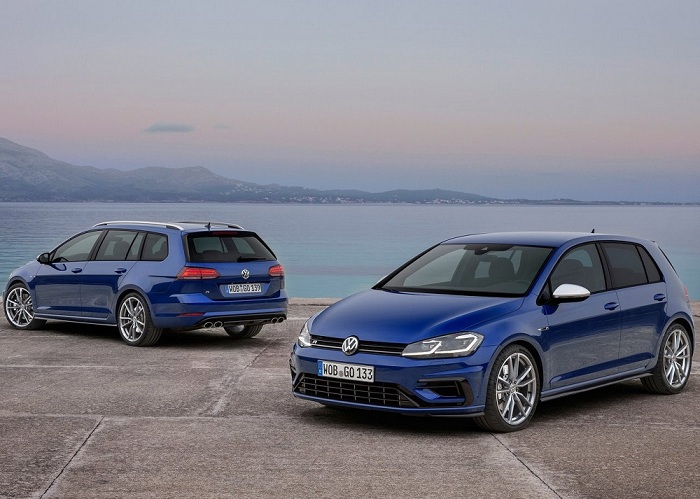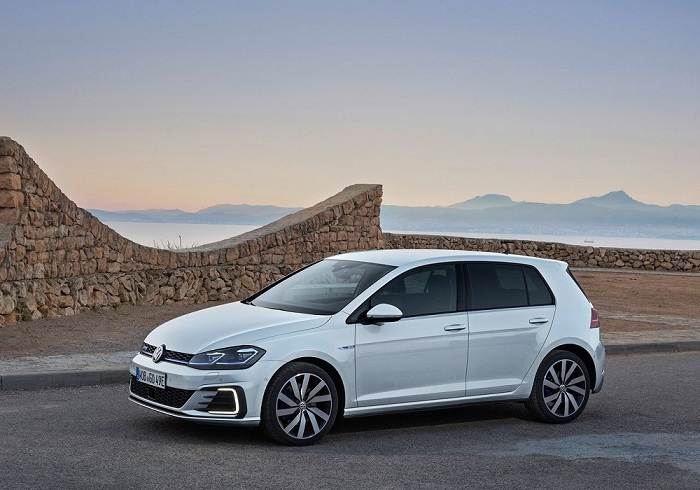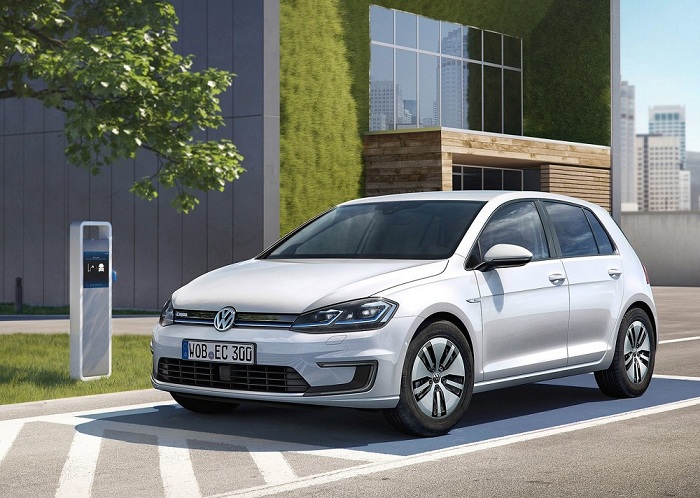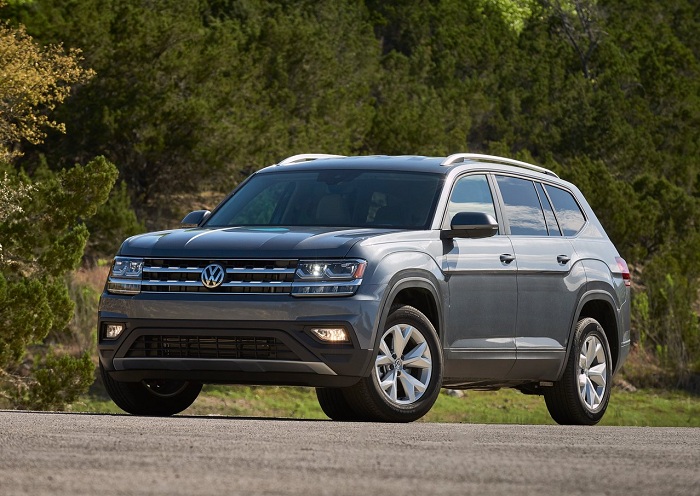Golf GTI Performance
Differing little from the standard GTI launched with the revised Golf 7 earlier this year on first glance, the Performance's biggest change comes up front with a 11 kW hike in power for a total output of 180 kW, and 20 Nm torque jump to 370 Nm. As before, the Performance can be had with a six-speed manual gearbox or Volkswagen's brand new seven-speed DSG, which allows it to go from 0-100 km/h in 6.2 seconds, and on to a limited top speed of 250 km/h.
Golf R

Aside from the limited edition Clubsport and Clubsport S versions, the R continues its reign as the most powerful series production Golf on sale today, with the facelifted version mainly benefitting from an exterior changes.
To this end, these consist of redesigned front and rear bumpers, front and rear LED lights, relocated dual exhausts, chrome matt silver, gloss black or carbon look finished mirrors, and 18 or 19-inch alloy wheels with a new Spielberg designed high gloss black option offered for the latter.
Underneath its skin, the R gets a Performance braking system with R branded callipers claimed to be two kilograms lighter than before, an R-specific Akrapovic titanium exhaust and optional Performance pack which adds semi-slick tyres, lip and boot spoiler and a choice of 19-inch Pretoria or Spielberg rims.
Available as either a five-door hatch of four-door Variant estate in Europe, the R retains its predecessors' 2.0 TSI engine with power and torque kept at 228 kW and 400 Nm. As before, drive goes to all four wheels via Volkswagen's 4Motion all-wheel drive system, through either a six-speed manual or new seven-speed DSG 'box.
Volkswagen claims a 0-100 km/h dash of 5.1 seconds for the manual and 4.7 seconds for the DSG, as well as a limited top speed of 250 km/h. Opt for the Performance package however, and the limiter can be removed at which point top speed climbs to 267 km/h or in the case of the Variant, 270 km/h.
Golf GTE

First launched back in 2014, the plug-in hybrid GTE is aimed at providing an alternative to the regular range of petrol and diesel models, with the biggest difference being the GTI-esque blue bar underneath the grille, blue GTE lettering and charging point behind the Volkswagen badge.
Aside from the same exterior enhancements as the normal Golf, the GTE now features what Volkswagen calls a predictive hybrid strategy that works in conjunction with the satellite navigation system to shut off the petrol engine and run in electric mode only when approaching a town.
A Traffic Jam Assist system and ability to drive up to 60 km/h semi-autonomously also debuts, along with Volkswagen's optional 12.3-inch Active Info Display instrument cluster and 9.2-inch Discover Pro infotainment system with Gesture Control.
Unlike the standard Golf, the GTE foregoes the new 1.5 TSI Evo petrol engine for the tried-and-tested 1.4 TSI developing 110 kW and 250 Nm, combined with a 75 kW electric motor for a total system output of 150 kW and 350 Nm of torque. Mated to a six-speed DSG gearbox, Volkswagen claims an electric only range of 50 km/h, combined fuel consumption of 1.6 L/100 km and emissions of just 36 g/km.
e-Golf

Debuting a few months before the GTE, the all-electric e-Golf features a number of significant changes with the most prominent being a larger 35.8 kWh battery pack instead of 24.2 kWh, allowing it to travel up to 300 km on a single charge versus the initial range of 190 km.
Output meanwhile is rated as 100 kW and 290 Nm of torque, up by 15 kW and 20 Nm, with Volkswagen claiming top speed of 150 km/h(140 km/h previously) and 0-100 km/h sprint of 9.6 seconds as opposed to 10.4 seconds.
Charging from flat to 80% takes 13 hours and 15 minutes using a conventional 230-volt socket, 4 hours and 15 minutes from a 7.2 kW charging station and a mere 45 minutes from 40 kW Combined Charging System.
...And over in the United States

Previewed in concept and production form since mid-2016, Volkswagen has now finally revealed pricing details of its all-important new seven-seat Atlas SUV.
Build at the German automaker's plant in Chattanooga, Tennessee, the Atlas, which will carry the concept Teramont designation in China, will be offered in a choice of five trim levels, two petrol engines, front or 4Motion all-wheel drive and a single eight-speed Tiptronic gearbox.
Starting the range off, the base S can be have with either a 2.0 TSI making 175 kW and 350 Nm of torque, or a 3.6 VR6 with 206 kW and 360 Nm. Prices are $31 425 (R432 549) and $32 825 (R451 819) respectively, although the latter option can also be had with AWD for an extra $1 800 (R24 776)
Moving on up, the VR6 exclusive S Launch edition is priced at $34 425 (R473 842) for the FWD and $36 225 (R498 619) for the 4Motion, while the next step up SE starts at $34 515 (R475 081) for the FWD 2.0 TSI, $35 915 (R494 352) for the FWD VR6 and $37 715 (R519 128) for the VR6 4Motion.
The so-called SE Technology, which includes items such as Adaptive Cruise Control, Forward Collision Warning and Autonomous Braking, kicks-off at $36 615 (R503 987) for the FWD 2.0 TSI, while the FWD VR6 is priced at $38 015 (R523 257) and the VR6 4Motion at $39 815 (R548 033).
Upping the ante further, the SEL is priced at $40 085 (R551 749) for the FWD 2.0 TSI or $41 815 (R575 562) for the FWD VR6. Opting for the 4Motion system on the VR6 will set buyers back $43 615 (R600 338)
At the sharp-end, the VR6 only SEL Premium commands a price tag of $49 415 (680 172), and comes fitted with the 4Motion system as standard. As previously reported though, the Atlas is not expected to debut in South Africa as it will be made in left-hand-drive only.
















